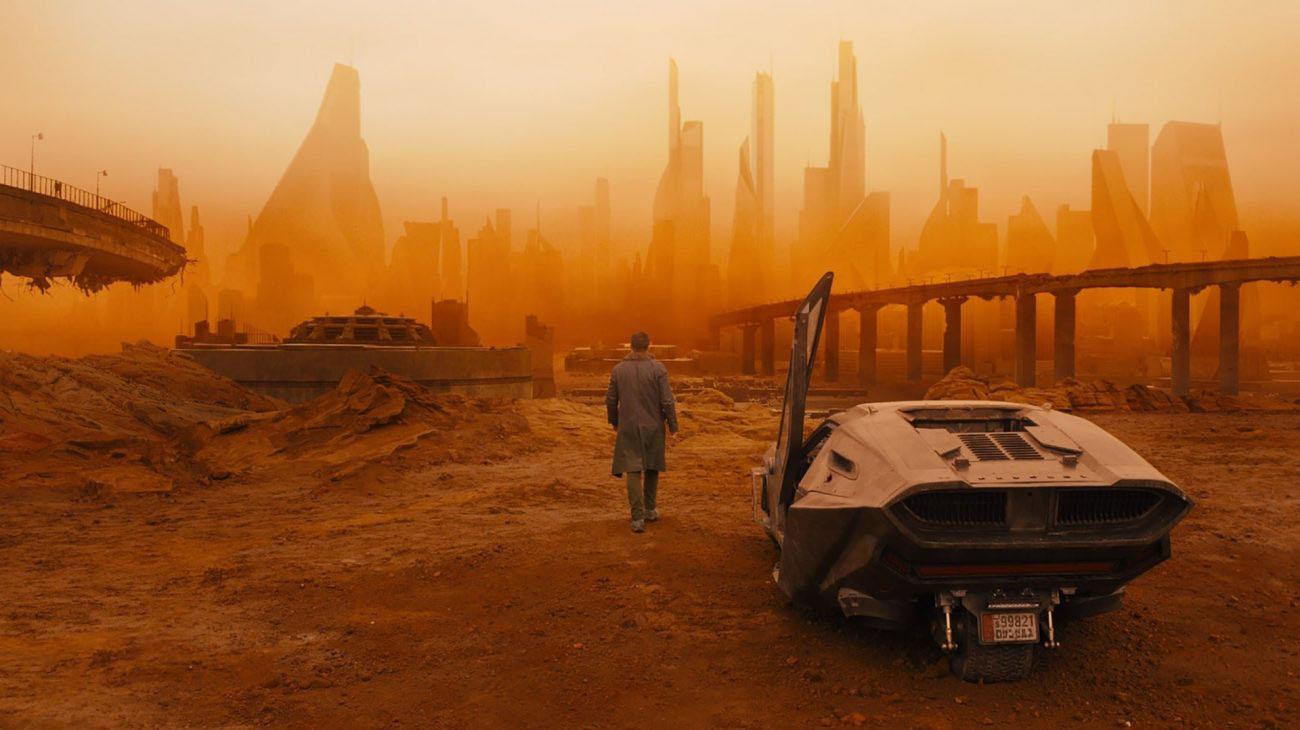There’s a scene in Jane Campion’s “Bright Star” that I use very often when discussing art and our relationship with it. In teaching poetry to a student, John Keats stops his class to give some valuable information:
A poem needs understanding through the senses. The point of diving into a lake is not immediately to swim to shore; it’s to be in the lake, to luxuriate in the sensation of water. You do not work the lake out. It is an experience beyond thought.
The four sentences are an expert riff on the idea of negative capability, which Keats coined, but it’s an even greater window into the way film can or should be considered as a medium. Literature, even Keats own poetry, depends on foregrounding language in a way that cannot be avoided but film – decisively, ultimately – depends on more. It depends on letting the images wash over us and allowing ourselves to be moved by their sensations. “Blade Runner,” the 1982 film directed by Ridley Scott, took that to the limit, so that the enduring cultural obsession with whether or not its protagonist Deckard is a replicant is almost incidental. That film is about images, about feelings, about mood and less about plot and text.
![]() Denis Villeneuve’s “Blade Runner 2049,” though, is not Scott’s and, critically, from its inception, it noticeably and notably foregrounds plot in a way that Scott’s film does not. The way “2049” foregrounds plot is almost ironic in a way. For, as film has gotten less traditionalist and less linear, plot has become incidental to most of the important filmic texts of the 21st century. Scott’s “Blade Runner,” as a stalwart of 80s cinema, has been influential in the way we tell stories and in the way that worlds are imagined on screen. “Blade Runner 2049,” though, lives in the classicism of it all, so much so that it’s odd how little this film feels influenced by that film.
Denis Villeneuve’s “Blade Runner 2049,” though, is not Scott’s and, critically, from its inception, it noticeably and notably foregrounds plot in a way that Scott’s film does not. The way “2049” foregrounds plot is almost ironic in a way. For, as film has gotten less traditionalist and less linear, plot has become incidental to most of the important filmic texts of the 21st century. Scott’s “Blade Runner,” as a stalwart of 80s cinema, has been influential in the way we tell stories and in the way that worlds are imagined on screen. “Blade Runner 2049,” though, lives in the classicism of it all, so much so that it’s odd how little this film feels influenced by that film.
“2049” is about another hunter. K, played by Ryan Gosling, is a blade runner who hunts rogue replicants, despite the fact that he is a replicant itself. (A replicant being a genetically engineered or artificial being created as an exact replica of a particular human being.) This bit of information is revealed to us almost immediately. “I don’t retire my own kind because we don’t run. Only older models,” he says. And immediately we are faced with the dichotomy of progress and “development.” The parallels between this and “Alien: Covenant,” another sequel to a Ridley Scott enterprise, feels more than incidental. Early on, and this is a spoiler, K happens upon the bones of a replicant who appears to have been pregnant. This bit of information upends the knowledge of what replicants can and cannot do. K’s boss is naturally worried about it. And so the rest of the film is about the search for that missing child. The search is essential to the mythology of the film, and the film’s climax hinges on that revelation. I’ll leave the plot there to go back to that “Bright Star” quote.
“2049” offers a lot to luxuriate in. It is 163 minutes long and each of those minutes is gorgeous to look at. Roger Deakins continues to top himself with his cinematography, building on his work with Villeneuve in “Prisoners,” “Sicario” and “Arrival” to deliver some deft camera work that more than stands up against Jordan Cronenweth’s work in the original. Gosling, too, is worthy of great praise for his work. It’s the kind of performance that he won’t be as immediately feted for, but he turns in an impressive performance as the taciturn K, faced with a crisis of conscience and confidence for much of the film’s running time. The film depends on his work a lot more than Scott’s film depended on Harrison Ford. Whereas Scott’s “Blade Runner” found its finest thesis on the margins, there is no one in the margins in “2049” that commands our interest or attention in the way that Roy Batty or even Pris Stratton did in the original.
Is it unfair that I keep invoking the name of the original in my critiques here? Almost certainly. It’s the ignominious fate of the thing that comes after. Always being considered against the thing that came before. You can tell that Villeneuve is aware of it, and credit to him and his team that they do the best job of distancing themselves from it. I suspect that the foregrounding of plot is a deliberate way of averting the film’s influence–but that’s easier said than done.
I haven’t made up my mind how I feel about “2049.” I left it moved and charm-ed and definitely impressed but I need to sit with it for a few more days, or even weeks before I decide what its legacy will be.
The audience I was with did not care much for the ending. After the final shot, which admittedly foregrounds an ambivalence that’s redolent of the original film, there was a long sustained suck-teeth from a woman in the audience followed by low grumbling as everyone filed out. I wondered how many of the audience had seen the original “Blade Runner” or were aware of the mythology it was playing on. I was reminded of the difficult position Villeneuve was placed in taking on this film. They have to manage the middle ground–the lovers of the original, and those who come to this with fresh eyes.
Late in the film, K meets an important character, whose identity I’ll not reveal. The film changes at this meeting, shifting tone, shifting identity and even shifting in a way I’m not certain that the film recovers from. For the film, textually, the past is a ghost that’s disorderly and menacing and for the film itself, metatextually, the spectre of Scott’s Blade Runner works the same.
Ultimately, Villeneuve acquits himself of what he needs to. “Blade Runner 2049” works without the original film. It cultivates mood and atmosphere well. But the original “Blade Runner” remains in the margins, explicit and implicit, drawing focus. Maybe it doesn’t matter though. Maybe the present needs the past to subsist.
Have a comment? Write to Andrew at [email protected]







